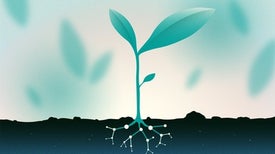
The Culture of Engineering Overlooks the People It’s Supposed to Serve
We must start teaching undergraduates to think about those for whom they design

We must start teaching undergraduates to think about those for whom they design

Scientists say that the new material is even more durable than real dental enamel

The U.S. Congress needs to uphold the freedom to repair electronic devices

A laser-focused chef prints and cooks complex designs

The World Economic Forum and Scientific American team up to highlight technological advances that could change the world—including self-fertilizing crops, on-demand drug manufacturing, breath-sensing diagnostics and 3-D-printed houses...

Innovations to help tackle societal challenges—especially climate change

A new delivery method for certain vaccines could make the lifesaving treatments more effective and accessible

The novel material mimics the layered structure of nacre

Both independent and remote-controlled machines can save lives

One of the experts who grades U.S. utilities every four years explains what needs to be fixed

You see it mentioned in countless phone commercials, and your phone might use it. But do you know how it works?

The tiny sensors could gather and transmit environmental data as they drift through the air

Members of the profession study such tragic events to try and ensure that something similar won’t happen again

Seawalls and levees may simply shift rising water elsewhere—often into disadvantaged communities

Apartment buildings, or blocks of row houses, can be upgraded in one installation

The algorithm hides sensitive information in a sea of decoys

The 3-D tracking systems used in Tokyo may one day enable digital twins of athletes

Then it played Super Mario Bros.

A proposed fiber-optic cable could make it easier for scientists to transmit crucial climate data

But for now, a square meter of the building material holds roughly the energy of two AA batteries
Support science journalism.

Thanks for reading Scientific American. Knowledge awaits.
Already a subscriber? Sign in.
Thanks for reading Scientific American. Create your free account or Sign in to continue.
Create Account